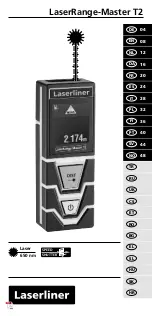
• If you are using the instrument in a floating condition and there is a risk of
dangerous voltage, only use lead wires that have safety terminals that cover
their conductive parts. Using a terminal with bare conductive parts (such as a
banana plug) can be dangerous if the terminal comes loose.
• If you are using the instrument in a floating condition and there is a risk of
dangerous voltage, do not use the fork terminal adapter set 758921. Due to the
structure of the product, it is possible to touch the metal parts of the fork terminal
adapter 758921. Be careful as this constitutes an electric shock hazard.
• Use the accessories of this product within the rated range of each accessory
(see page iv). When using several accessories together, use them within the
specification range of the accessory with the lowest rating.
CAUTION
• Use conducting wires that have adequate margins of withstand voltage and
current capacity with respect to the voltage or current to be used.
• To prevent oscillations due to stray capacitance and lead inductance, use
twisted-pair lead wires to connect to the OUTPUT Hi and OUTPUT Lo terminals.
Likewise, use twisted-pair lead wires to connect to the SENSE Hi and SENSE Lo
terminals. In particular, wire the lead wires short in the case of a high-capacity
load in a four-terminal connection in voltage source mode.
French
AVERTISSEMENT
Avant le câblage
• Relier l’instrument à la terre avant de le brancher sur l’appareil cible. Le cordon
d’alimentation livré avec l’instrument est doté de trois broches. Brancher le
cordon d’alimentation sur une prise de courant à trois plots mise à la terre.
• Veillez à mettre le GS820 hors tension lorsque vous connectez le dispositif à
tester.
Câblage
• Utilisez seulement des câbles en plomb dont les pièces conductrices
sont recouvertes pour un raccordement aux bornes de sortie. Des pièces
conductrices exposées peuvent entraîner une choc électrique.
• N’utilisez pas de câble de plomb dont les pièces conductrices sont exposées,
en raison de traces d’usure de l’isolation ou de câbles cassés, car ceci risque
d’entraîner un court-circuit ou un choc électrique.
• Ne raccordez pas une source de tension en mode source de tension ou une
source de courant en mode source de courant. Un raccordement incorrect
risque d’endommager le GS820.
3.5 Wiring Precautions
3-11
IM 765601-01E
Instrument Preparation and Common Operations
3
2
1
4
5
6
7
8
9
10
11
12
13
14
15
16
17
18
App
Index
















































